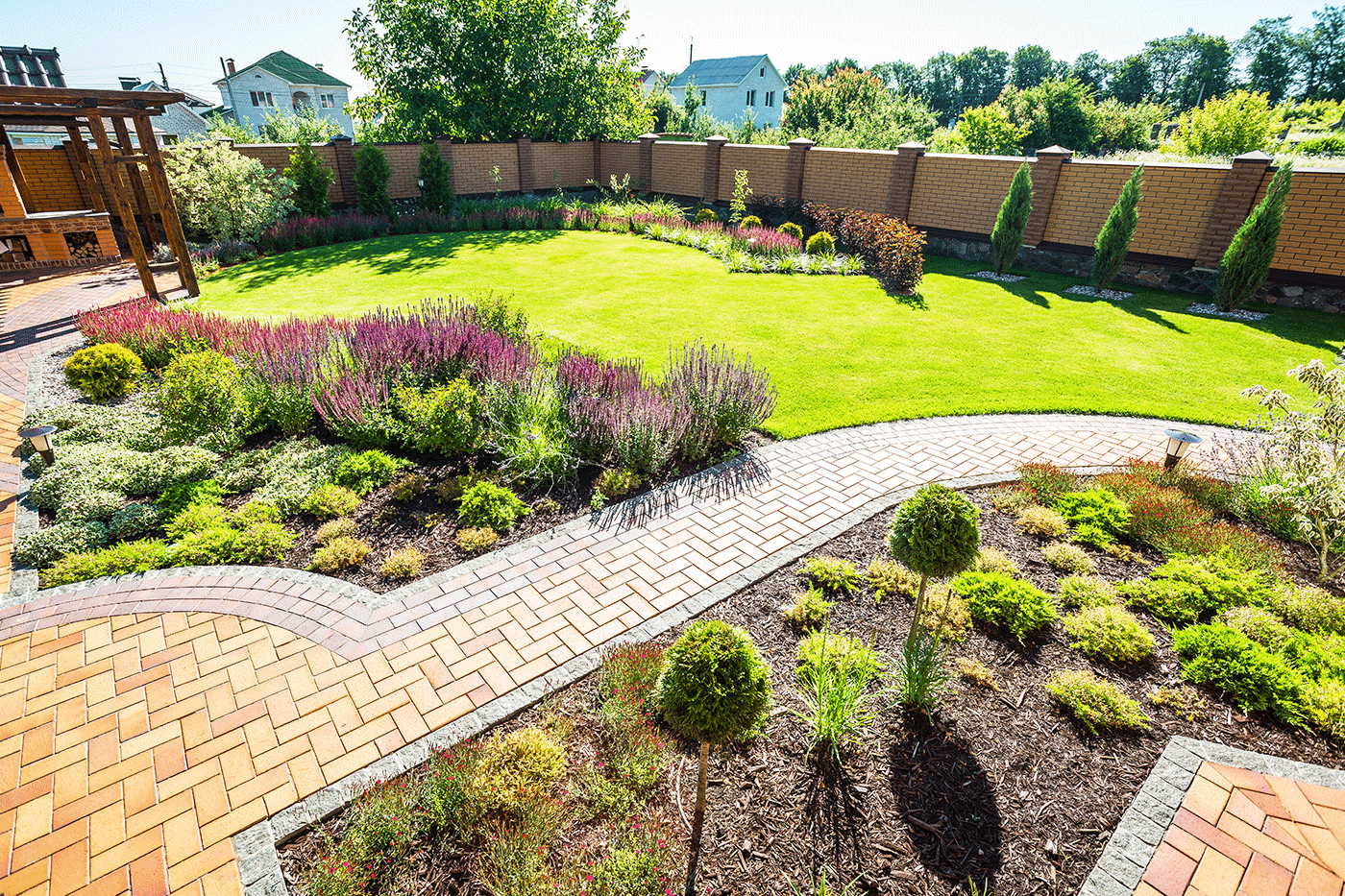
Landscaping Hills District: 7 Tips To Help Every Gardener
Ever wondered how to do landscaping hills district? I’m sure it has come across the minds of almost all gardeners, from beginners to pros. And I’m sure it’s relevant for those who live there.
In the hill districts, the land can be uneven and the soil unpredictable, so it’s difficult to speculate what can grow and what can’t. That makes maintenance even harder than it already is.
Apart from that, it’s harder for landscaping companies and construction contractors to transport materials. So if you want to do some hardscaping and add porcelain or glass textures to your garden, tough luck. People from the city might have some difficulty showing up with all the necessary equipment for installing such features.
So how do we tackle all of these problems?
This article will give you a breakdown of a garden’s unique needs within a hill district. We’ll teach you the ways of landscaping hills districts. Once you’re done reading this, follow our suggestions and see what works for you and what doesn’t! Gardening is a game suited for those who are willing to experiment.
In the end, this will be worth all the effort as the scenic beauty of a hill district can complement your backyard beautifully.
So what are you waiting for? Read on to find out the best tips for landscaping hills district.
1. Select The Right Plants
The way to ace gardening in hill districts is to get your A-game on when it comes to choosing plants. This will vary with the type of plant you’re going for.
If you want to choose between shrubs or bushes or any other ground plant, you’ll have a wide variety to choose from. Hills are full of such ground plants, so it’s best to ask locals (if you’ve recently moved there) which ones are suitable for its soil.
Make sure to pick plants that are drought tolerant. Since the area is hilly, water is likely to drain quicker, making the soil dry. So remember to water heavily and keep plants that are drought resistant!
2. Observe and Analyse Your Area
At FanScaping, we always follow a motto: doing your homework is the best way to prepare. Knowing what to expect in your area and researching what plants work and which ones won’t last is essential. Investing in plants take up the bulk of your wallet! So learn as much as you can.
Jot down a series of questions you should answer. See where the existing trees are and where the rocks and boulders are placed. How frequently do the flowers bloom? Do floods happen often? Can you find any soil eroding? All of this takes time and effort, but this saves a lot of hassle in the long run.
3. Instruct Your Contractors To Build Stairs or Pavements
Even though we said hardscaping is a mountainous terrain (pun intended), we still think you should spend some cash on it. Why? Because it’s no fun walking on weeds and shrubs.
Building a curved path adds volumes of beauty to your front yard. It frames your front porch beautifully and gives an accent to the surrounding plants. Add stairs of any material you like: wood, concrete, sandstone – go crazy.
4. Don’t Go After The Present Trees.
Many gardeners have a habit of completely redoing a piece of land after they arrive at a new site. While that’s a choice any gardener can make, we recommend leaving behind some plants.
Why do we say this? Because some old plants have strong roots that provide necessary anchorage to the soil, holding it firmly. This helps in the drainage of water and distributes water uniformly. Tall trees provide shade, under which you can read books and play with your children. So don’t cut them down.
Then which ones should you remove, one may ask. Simple – get rid of the plants that invade other plants’ territory! Many plants are invasive, and it’s time for them to go.
5. Utilize All The Mulch and Bark You Can Find
All of the advice we gave might apply to pro gardeners. But what about the ones who have just begun gardening? For them, this is the easiest way to maintain a garden without breaking too much sweat.
You won’t have to mow any lawn if you cover most of the area with bark or mulch. This is also an alternative if you don’t want to plant shrubs or bushes. However, be careful with this option. The disadvantage lies in bark or mulch not being held as there’s nothing that holds them together.
To use this technique, we suggest barren areas with relatively low rainfall. That way, the rain won’t wash away the mulch.
6. Use Retaining Walls To Your Advantage
Retaining walls are quite common in such areas. The main problem with hillside soil is just how easily it erodes. Retaining walls are an easy solution to preventing or reducing that.
Recommended materials include stone, wood, brick or concrete – whichever you think suits your house’s colour palette. Matching the hues and materials of your home add another layer of beauty to your landscape.
7. Contact Experts If You Can’t Do It Yourself
As much as we encourage DIY landscaping and gardening, you may find yourself in a pickle using these techniques in unfamiliar territory. In this new terrain, the best choice is to contact local professionals who have this area at the back of their mind.
Take their advice and go with what they say, but make sure you outline what exactly you want with your backyard. Even though it’s a sloped yard and you may not know everything about it, you should always voice your wants and find ways to fulfill your needs. This is the way you can construct your dream garden.
Conclusion
Landscaping hills district can be a pain, but with the right tools and guidelines, you can do it too. Making your garden look ethereal isn’t that easy, but it’s worth the effort. With a picturesque background, your home can be far warmer than you could ever imagine in a hilly area. We hope you found these tips for landscaping hills district helpful.


Recent Comments